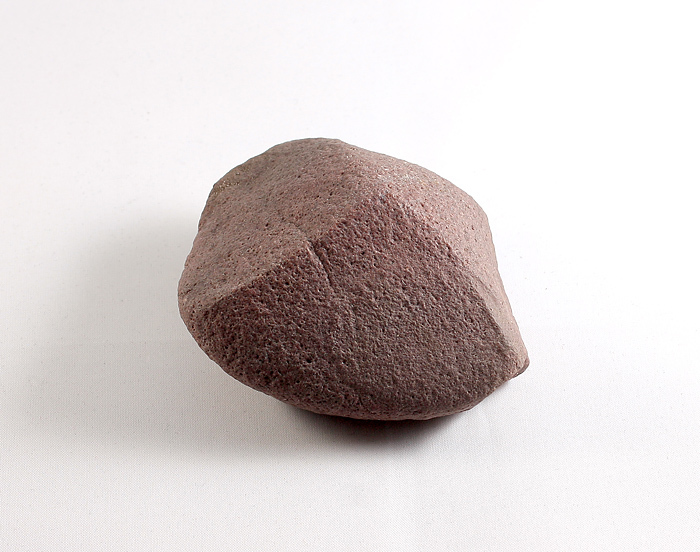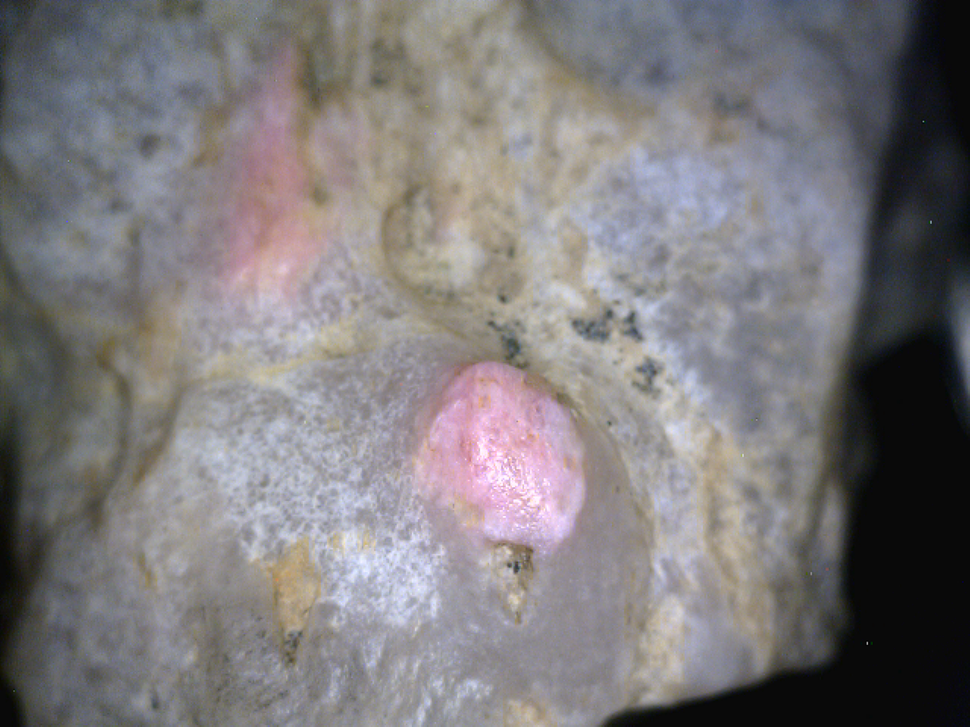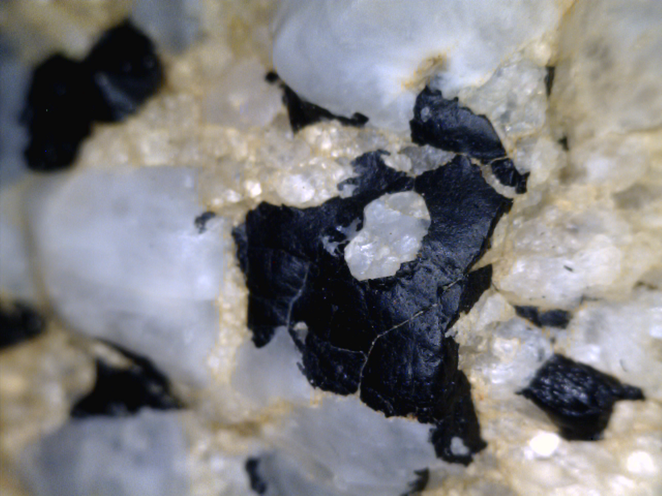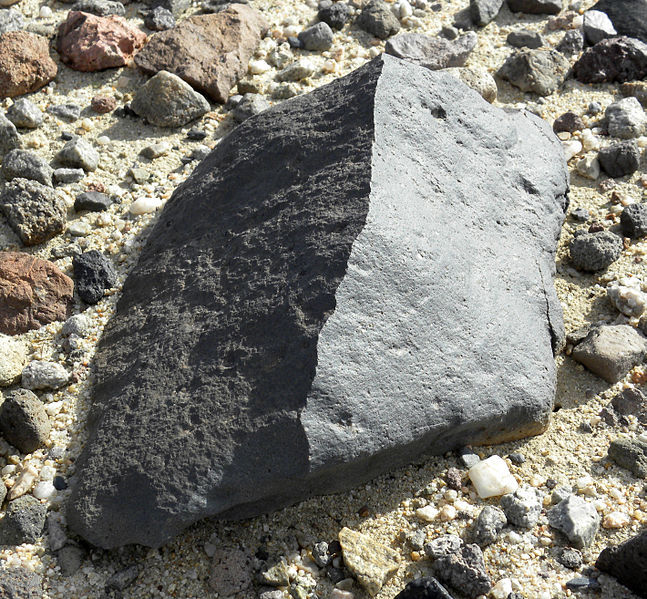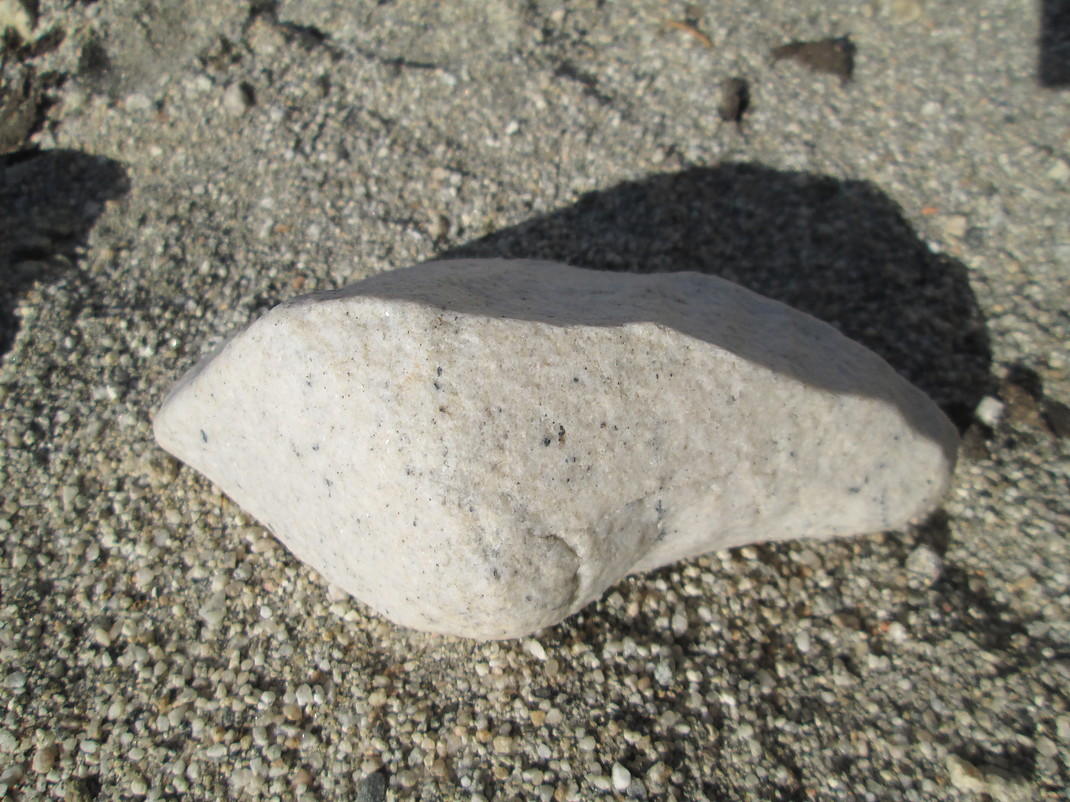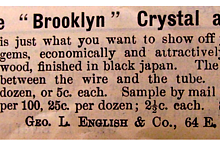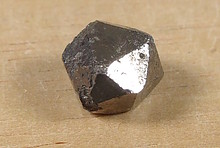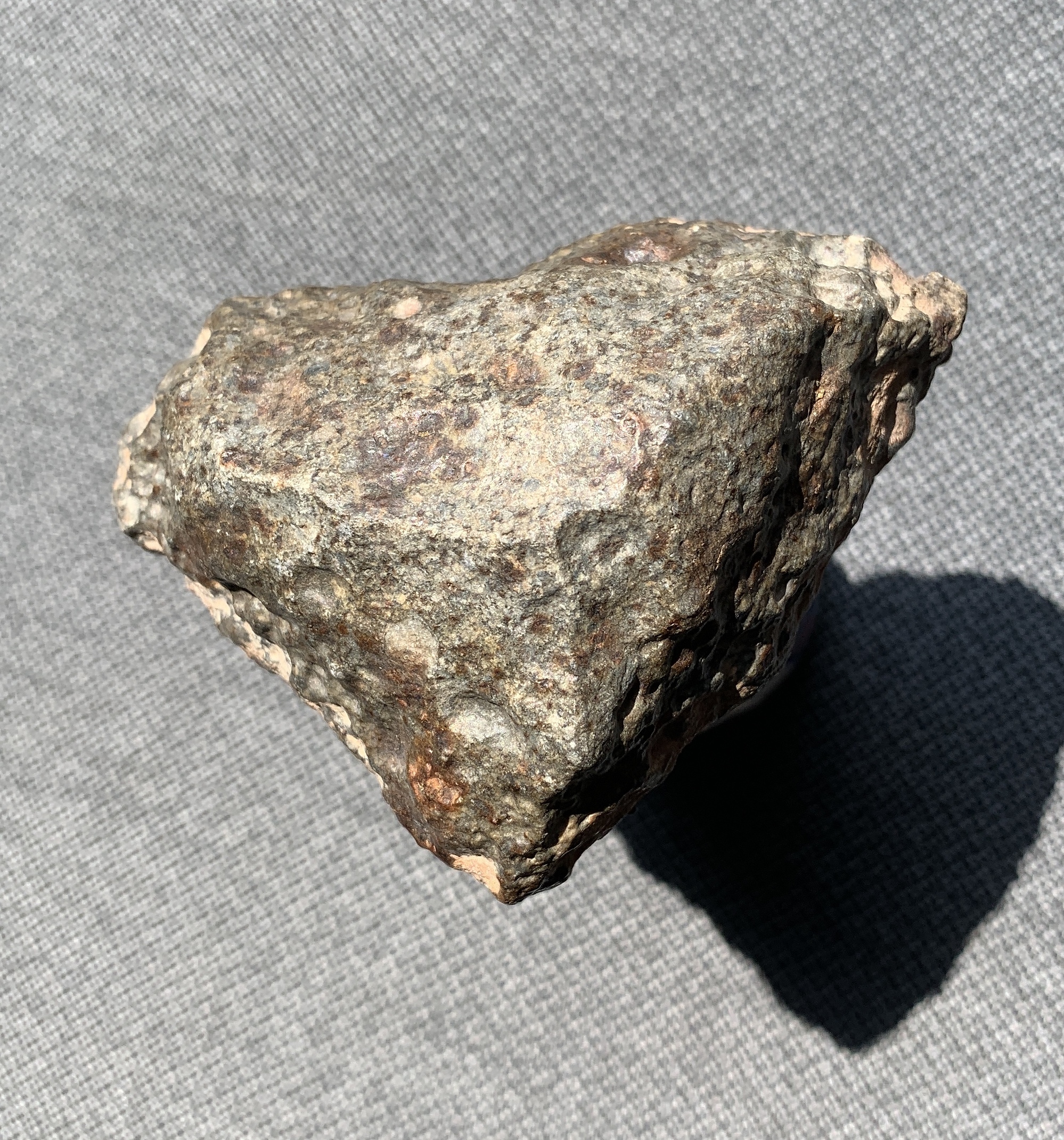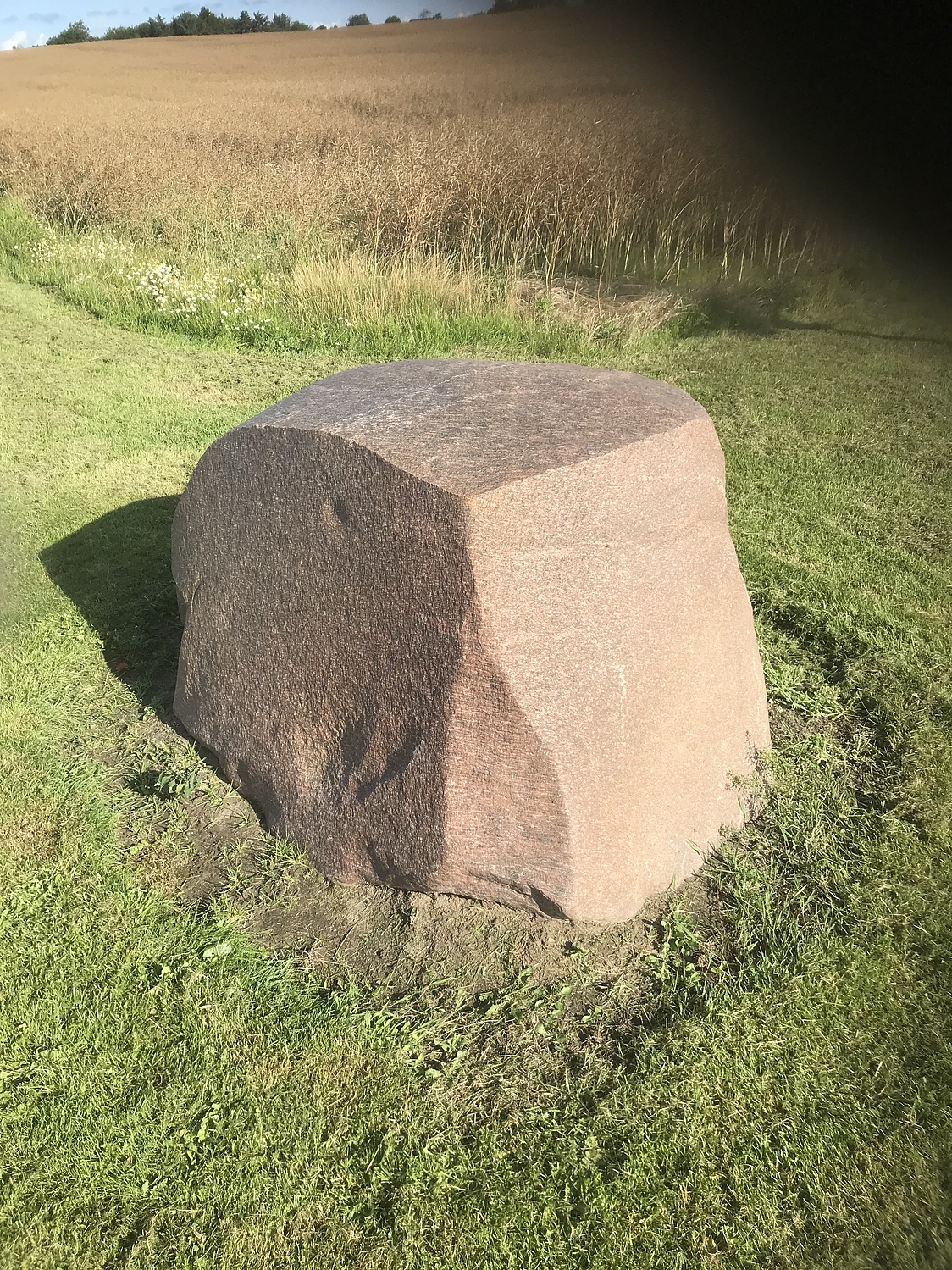Dreikanter and other Ventifacts
Last Updated: 20th Jun 2021By Alfredo Petrov
In September 2012, a news commentator describing new landscape photos coming in from Curiosity, NASA's Mars rover, exclaimed how “mysterious” it was that so many Mars rocks looked like little pyramids. Let's hope he wasn't speculating about little green lapidarists running around with their rock carving tools, creating “pyramid power centers" for the local mystics. Not mysterious at all really, to anyone who spends much time in windy deserts on Earth, as these “little pyramids” are typical ventifacts which, as their name implies, are rocks “shaped by wind”; and not only shaped but often well-polished too – natural lapidary art by Nature.
To be more precise, the “wind” is not capable of shaping or polishing rocks at all, regardless of how strong the wind or how soft the rock. What does the shaping and polishing is abrasion by sand and dust particles carried by the wind, just as in air scribes, sand blasters and other so-called “air abrasion” tools such as those used for fossil preparation or removing old highway paint. The abrasive particles, even though they are much heavier than air, get lifted and carried to their impact points by a complex process called saltation, a word derived from the Latin for “jump”, not related to the mineral in our lunch that raises our blood pressure.
So in order to get a ventifact we need a combination of circumstances:
1) Abundant wind of relatively high velocity. The atmosphere of Mars, despite being only a small fraction as dense as the Earth's, fulfills this condition admirably, and tremendous dust storms are common there. Relatively constant wind direction, at least seasonally, is another favorable factor.
2) A source of loose sand and dust that can perform the abrading, plus some rocks to get abraded. A landscape composed monotonously of all sand, all dried mud, or all rocks is not going to produce any ventifacts, obviously.
3) A lack of vegetation, in order to allow particles to be entrained by the wind, with no lichens or moss to cushion the rocks. This commonly implies a desert, but not necessarily – Anywhere loose sand is intermittently dry and exposed to high winds will do, so young glacial outwash plains will qualify too, as in Greenland and the “lag gravels” on the shores of Lake Superior in Michigan, and even some ocean beaches, as in Shizuoka in Japan, and the Netherlands.
Keeping these conditions in mind, one can see that not every patch of desert on Earth (nor on Mars) can be expected to exhibit ventifacts. In fact they can be abundant over certain limited areas, but absent in most deserts. When ventifacts are found in areas where they are no longer being created, in fossil soil horizons, they provide clues to the paleoclimate.
We are all familiar with the typical rounded forms of stones shaped by abrasion in water, like the gravel and cobbles from riverbeds and beaches. Rocks shaped by wind, on the other hand, display sharp edges which make them easy to distinguish from beach and stream stones (*). The shapes achieved by ventifacts can vary greatly, depending on grain size and composition of the rock, any layering or schistosity present, and how uniform the wind direction is. When the rock is tough and its composition quite uniform, as in many basalts, quartzites, and marbles, the prevailing ventifact shape is the classic dreikanter – a name derived from the German word for “three edges” - and it is these dreikanter, resembling 3-sided pyramids, that so mystified the news commentator reporting on the Mars photos. The flattish faces of dreikanter, as well as the edges themselves, are frequently well polished and feel even smoother than beach pebbles. When the dreikanter is on sloping terrain, the polish generally extends to all faces, even the bottom one buried in the ground, which indicates that they must occasionally get undermined and turn over!
When ventifacts are created from mineralogically heterogeneous rocks, like gneiss, granite, or pegmatite, their faces will not be so smooth, as the different mineral components, not being all the same hardness, will abrade at different rates, although those rates may not necessarily accord with the Mohs hardness of the mineral. The Mohs hardness scale commonly used by mineral collectors measures resistance to scratching, and there are alternative scales for other types of hardness. Windborn sand abrades by percussion rather than scratching, and percussion effects can be unexpectedly different. Schorl, for example, is at least as hard as quartz on the Mohs scale (Mindat 7; Webmineral 7.5), but the author has observed ventifacts in which the schorl is abraded more deeply than the surrounding quartz; and zoisite, with a Mohs hardness slightly softer than quartz, standing out in relief on wind-abraded quartz surfaces. Micas, whose Mohs hardness is very much softer than quartz, can stand out and resist wind abrasion remarkably well, presumably because their elasticity makes many impacting particles just bounce off.
If you don't feel like a long trip to Mars or even the middle of Libya but would nevertheless like to collect a nice dreikanter somewhere more easily accessible, they can be found in a few of the windier patches of California's deserts. And where are those windier patches? Well, the immense fields of wind-powered electricity generators are a good clue, like the ones near Barstow, or Palm Springs.
Apart from dreikanter, look for other types of ventifacts whose strange mimetic shapes make them much beloved by collectors of suiseki (“viewing stones” or “scholars' rocks”), which often achieve prices similar to those of fine mineral specimens, especially in Asian markets, where collecting suiseki is a more important passion than in the western world.
* What was written above about the shapes of stones does not apply to the shapes of sand particles, for which the opposite is true – Wind formed sand (as in sand dunes) tends to be more highly rounded than sand grains from rivers.
(An earlier version of this article was first published in the November 2012 issue of Mineral News.)
To be more precise, the “wind” is not capable of shaping or polishing rocks at all, regardless of how strong the wind or how soft the rock. What does the shaping and polishing is abrasion by sand and dust particles carried by the wind, just as in air scribes, sand blasters and other so-called “air abrasion” tools such as those used for fossil preparation or removing old highway paint. The abrasive particles, even though they are much heavier than air, get lifted and carried to their impact points by a complex process called saltation, a word derived from the Latin for “jump”, not related to the mineral in our lunch that raises our blood pressure.
So in order to get a ventifact we need a combination of circumstances:
1) Abundant wind of relatively high velocity. The atmosphere of Mars, despite being only a small fraction as dense as the Earth's, fulfills this condition admirably, and tremendous dust storms are common there. Relatively constant wind direction, at least seasonally, is another favorable factor.
2) A source of loose sand and dust that can perform the abrading, plus some rocks to get abraded. A landscape composed monotonously of all sand, all dried mud, or all rocks is not going to produce any ventifacts, obviously.
3) A lack of vegetation, in order to allow particles to be entrained by the wind, with no lichens or moss to cushion the rocks. This commonly implies a desert, but not necessarily – Anywhere loose sand is intermittently dry and exposed to high winds will do, so young glacial outwash plains will qualify too, as in Greenland and the “lag gravels” on the shores of Lake Superior in Michigan, and even some ocean beaches, as in Shizuoka in Japan, and the Netherlands.
Keeping these conditions in mind, one can see that not every patch of desert on Earth (nor on Mars) can be expected to exhibit ventifacts. In fact they can be abundant over certain limited areas, but absent in most deserts. When ventifacts are found in areas where they are no longer being created, in fossil soil horizons, they provide clues to the paleoclimate.
We are all familiar with the typical rounded forms of stones shaped by abrasion in water, like the gravel and cobbles from riverbeds and beaches. Rocks shaped by wind, on the other hand, display sharp edges which make them easy to distinguish from beach and stream stones (*). The shapes achieved by ventifacts can vary greatly, depending on grain size and composition of the rock, any layering or schistosity present, and how uniform the wind direction is. When the rock is tough and its composition quite uniform, as in many basalts, quartzites, and marbles, the prevailing ventifact shape is the classic dreikanter – a name derived from the German word for “three edges” - and it is these dreikanter, resembling 3-sided pyramids, that so mystified the news commentator reporting on the Mars photos. The flattish faces of dreikanter, as well as the edges themselves, are frequently well polished and feel even smoother than beach pebbles. When the dreikanter is on sloping terrain, the polish generally extends to all faces, even the bottom one buried in the ground, which indicates that they must occasionally get undermined and turn over!
When ventifacts are created from mineralogically heterogeneous rocks, like gneiss, granite, or pegmatite, their faces will not be so smooth, as the different mineral components, not being all the same hardness, will abrade at different rates, although those rates may not necessarily accord with the Mohs hardness of the mineral. The Mohs hardness scale commonly used by mineral collectors measures resistance to scratching, and there are alternative scales for other types of hardness. Windborn sand abrades by percussion rather than scratching, and percussion effects can be unexpectedly different. Schorl, for example, is at least as hard as quartz on the Mohs scale (Mindat 7; Webmineral 7.5), but the author has observed ventifacts in which the schorl is abraded more deeply than the surrounding quartz; and zoisite, with a Mohs hardness slightly softer than quartz, standing out in relief on wind-abraded quartz surfaces. Micas, whose Mohs hardness is very much softer than quartz, can stand out and resist wind abrasion remarkably well, presumably because their elasticity makes many impacting particles just bounce off.
If you don't feel like a long trip to Mars or even the middle of Libya but would nevertheless like to collect a nice dreikanter somewhere more easily accessible, they can be found in a few of the windier patches of California's deserts. And where are those windier patches? Well, the immense fields of wind-powered electricity generators are a good clue, like the ones near Barstow, or Palm Springs.
Apart from dreikanter, look for other types of ventifacts whose strange mimetic shapes make them much beloved by collectors of suiseki (“viewing stones” or “scholars' rocks”), which often achieve prices similar to those of fine mineral specimens, especially in Asian markets, where collecting suiseki is a more important passion than in the western world.
* What was written above about the shapes of stones does not apply to the shapes of sand particles, for which the opposite is true – Wind formed sand (as in sand dunes) tends to be more highly rounded than sand grains from rivers.
(An earlier version of this article was first published in the November 2012 issue of Mineral News.)
Article has been viewed at least 8559 times.




